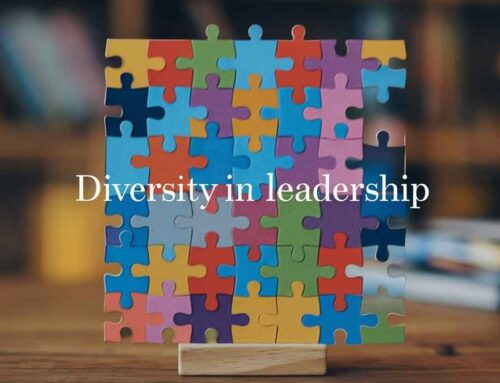
What is Agile Leadership?
Agile Leadership is a dynamic, adaptive approach to guiding teams and organizations through uncertainty and rapid change. It prioritizes flexibility, collaboratio, and continuous learning over rigid hierarchies or fixed plans.
Agile leaders empower teams by fostering autonomy, encouraging experimentation and embracing iterative progress. They focus on delivering value incrementally, responding swiftly to feedback and aligning actions with evolving goals.
Key traits include decentralized decision-making, transparent communication and a growth mindset that views failures as learning opportunities. Agile leaders cultivate psychological safety, enabling teams to innovate without fear of blame.
They balance short-term adaptability with long-term vision, ensuring alignment with organizational purpose.
The Essence of Agile Leadership
At its core, agile leadership represents a dynamic, responsive approach to steering an organization. Grounded in the principles of adaptability, collaboration and quick decision-making, agile leadership offers a refreshing departure from traditional top-down management. Instead, it champions a more fluid, inclusive structure, one that nurtures innovation and resilience.
Embracing Change
In the landscape of agile leadership, change is not merely tolerated; it’s actively embraced. We understand that to evolve and flourish, organizations must be malleable, capable of swiftly adjusting to market demands, technological advancements and unforeseen disruptions. In this spirit, an agile leader serves as a catalyst for change, inspiring their team to view shifts as opportunities for progress rather than obstacles.
Traits of an Agile Leader
Now, let’s delve into the qualities that define an agile leader. Picture a leader who is not just a decision-maker, but a facilitator, a mentor and a catalyst for progress. They embody:
-
Adaptability
Agile leaders thrive in dynamic environments, adjusting to evolving circumstances with ease. They remain open to new ideas, approaches and methodologies, embracing change as a natural part of growth.
-
Emotional Intelligence
Adept at understanding and channeling emotions, agile leaders foster an environment of empathy, trust and collaboration, drawing out the best in their teams.
-
Courageous Decision-Making
In a world that demands rapid responses, agile leaders exhibit the courage to make informed, timely decisions, guided by both intuition and data.
-
Empowerment
Empowerment takes center stage in the agile leadership playbook. Leaders empower their teams, soliciting diverse perspectives and entrusting their members with the autonomy to innovate and excel.
-
Continuous Learning
An agile leader is a perpetual student, embracing ongoing personal and professional development. They encourage a culture of curiosity and learning within their team, fostering a spirit of innovation and growth.
Agile Leadership in Practice
Let’s peer into the practical application of agile leadership within teams and organizations:
-
Empowering Teams
Agile leaders champion a collaborative environment, where every team member’s voice is valued. They encourage open dialogue, welcome dissenting opinions and foster an inclusive culture that harnesses the collective intelligence of the team.
-
Iterative Approach
By leveraging iterative methodologies like Scrum or Kanban, agile leaders enable their teams to break down projects into manageable increments, allowing for continuous feedback, adaptation and incremental improvements.
-
Risk-Taking
Agile leadership emboldens teams to take calculated risks, fostering a culture where failures are viewed not as setbacks, but as opportunities for learning and innovation.
-
Focus on Customer Value
Agile leaders align their team’s efforts with delivering tangible value to their customers. By prioritizing customer needs and feedback, they steer their teams toward impactful, customer-centric solutions.
-
Adaptive Communication
Effective communication lies at the heart of agile leadership. Leaders engage in transparent, frequent communication, fostering an environment where information flows freely and ideas are exchanged without barriers.
Overcoming Challenges
Championing agile leadership isn’t without its hurdles. Navigating resistance to change, managing diverse team dynamics and aligning organizational processes with agile principles pose significant challenges. Agile leaders must adeptly guide their teams through these obstacles, fostering a culture of continuous improvement and adaptability.
The Impact of Agile Leadership
The transformative impact of agile leadership reverberates through organizations and teams. By embracing agility, leaders catalyze a shift towards more efficient, innovative and engaged work culture. Teams experience heightened morale, improved productivity and a sense of ownership, as they contribute actively to the organization’s evolution. This, in turn, leads to accelerated adaptability, improved customer satisfaction and enhanced resilience in the face of market fluctuations.
The Future of Leadership
As we step into the future, agile leadership stands poised to shape the landscape of organizational governance. Its influence extends beyond the realm of management, seeping into the very essence of corporate culture, promoting a mindset of flexibility, collaboration and continuous improvement.
So, to all the leaders out there, whether at the helm of a vast enterprise or steering a small team, consider the transformative potential of agile leadership. Embrace change, nurture adaptability and champion a culture that thrives amidst uncertainty. By doing so, you not only pioneer change but also cultivate an environment primed for innovation and evolution.
Conclusion
In closing, let’s take a moment to ponder these words by The Great Nelson Mandela – “A leader is like a shepherd. He stays behind the flock, letting the most nimble go out ahead, whereupon the others follow, not realizing that all along they are being directed from behind.” This sentiment encapsulates the essence of agile leadership – the art of leading from within, empowering others to chart the course ahead and orchestrating transformation with a steady hand.
As we navigate the ever-evolving landscape of business and leadership, remember that agility is not just a trait but a mindset – a way of thinking and acting that propels organizations towards sustained success. Embrace the principles of agile leadership, sow the seeds of change and watch as your teams blossom into resilient, innovative forces in the marketplace.
So, go forth, fellow leaders and dare to pioneer change through agile leadership. Transform your approach, inspire your teams and forge a path towards a brighter, more agile future. Together, let’s embark on this journey of growth, adaptability and excellence. The future beckons – embrace it with the spirit of agile leadership at your helm.
And there you have it – an exploration into the world of Agile Leadership, from its defining traits to practical applications and the transformative impact it catalyzes. May this journey inspire you to champion change, foster agility and lead with purpose in an ever-changing world.
CTA: Ready to Lead the Future?
Step into the world of agile leadership and transform the way you guide your team. Embrace change, empower innovation and pioneer a culture of adaptability that drives success. Start your journey today, adopt the agile mindset, inspire your team and shape a resilient, thriving organization. The future of leadership is yours to define. Take the leap now!
FAQs
Q: What is agile leadership?
A: Agile leadership is a dynamic and responsive approach to leading an organization, rooted in adaptability, collaboration and quick decision-making. It moves away from traditional top-down management, promoting a fluid, inclusive structure that fosters innovation and resilience.
Q: How does agile leadership differ from traditional leadership styles?
A: Unlike traditional leadership, which often relies on rigid hierarchies and slow decision-making, agile leadership emphasizes flexibility, empowerment and rapid responses to change. It prioritizes collaboration and continuous improvement over strict control and fixed processes.
Q: Why is embracing change important in agile leadership?
A: Embracing change is key because it allows organizations to stay adaptable in the face of market shifts, technological advancements and disruptions. Agile leaders view change as an opportunity for growth, inspiring their teams to evolve and innovate rather than resist.
Q: What are some key traits of an agile leader?
A: Agile leaders are adaptable, emotionally intelligent, courageous in decision-making, empowering and committed to continuous learning. These traits enable them to thrive in dynamic environments and foster a collaborative, innovative team culture.
Q: How do agile leaders empower their teams?
A: Agile leaders empower teams by valuing every member’s input, encouraging open dialogue, welcoming diverse perspectives and granting autonomy to innovate. This creates an inclusive environment where collective intelligence drives progress.
Q: What is an iterative approach and how does it relate to agile leadership?
A: An iterative approach involves breaking projects into smaller, manageable increments, using methods like Scrum or Kanban. Agile leaders use this to enable continuous feedback, adaptation and incremental improvements, ensuring flexibility and responsiveness.
Q: How does agile leadership encourage risk-taking?
A: Agile leadership fosters a culture where calculated risks are encouraged and failures are seen as learning opportunities rather than setbacks. This mindset promotes innovation and bold experimentation within teams.
Q: Why is customer value a focus in agile leadership?
A: Agile leaders prioritize delivering tangible value to customers by aligning team efforts with customer needs and feedback. This customer-centric focus ensures that solutions are impactful and relevant, driving satisfaction and success.
Q: What challenges might arise when implementing agile leadership?
A: Challenges include resistance to change, managing diverse team dynamics and aligning organizational processes with agile principles. Agile leaders must navigate these hurdles by fostering a culture of adaptability and continuous improvement.
Q: What impact does agile leadership have on teams and organizations?
A: Agile leadership boosts team morale, productivity and ownership while enhancing organizational adaptability, customer satisfaction and resilience. It creates an efficient, innovative and engaged work culture primed for success.
Q: How does agile leadership shape the future of organizational governance?
A: Agile leadership promotes a mindset of flexibility, collaboration and continuous improvement that influences corporate culture. It prepares organizations to thrive in uncertainty, making it a cornerstone of future-ready leadership.
Q: What does Nelson Mandela’s quote mean in the context of agile leadership?
A: Mandela’s quote likens a leader to a shepherd guiding from behind, which reflects agile leadership’s focus on empowering others to lead and innovate while subtly steering the team toward transformation and success.
Tags: Agile Leadership Adaptability Collaboration Emotional Intelligence Empowerment Iterative Approach Customer-Centric Leadership Decentralized Decision-Making Scrum Framework Kanban Methodology Continuous Improvement Psychological Safety Risk-Taking Culture Organizational Agility Future-Ready Leadership














